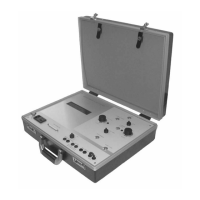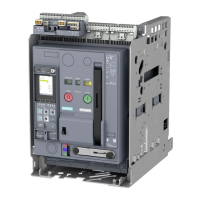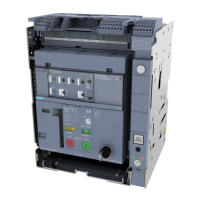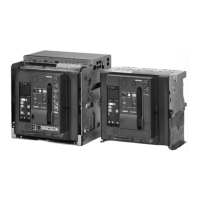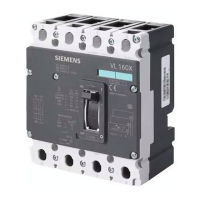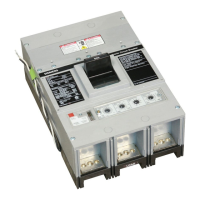Description
2.8 Electronic trip unit ETU
3VA27 molded case circuit breakers & 3WL10 air circuit breakers
Manual, 10/2018, L1V30499596002-01
59
Description of the protection functions
Overload protection (LT)
The overload protection of the ETUs of the 3 and 6-series is inverse-time long-time-delayed
and has an I²t characteristic by default. On electronic trip units of the 6-series, the
characteristics can be adapted to characteristics acc. to IEC 60255 to meet increased or
special requirements, for example, to produce a I
4
t characteristic. In this way, improved
discrimination with respect to fuses or upstream protection devices, such as medium-voltage
protection devices, can be achieved.
I
r
denotes the overcurrent setting value and t
r
the associated time delay. The time delay for
the overcurrent trip is defined as 6 times the value of the current setting I
r
at the reference
point in the same way as the other size devices of the 3WL portfolio. The minimum tripping
time is limited to 500 ms.
A pre-alarm is also output when 90% of the set current setting I
r
is reached. This pre-alarm
can be modified on all trip units.
Short-time-delayed short-circuit protection (ST)
The ST function of the trip unit can be used to implement time-selective, short-time-delay,
short-circuit tripping in low-voltage systems in which a number of circuit breakers are
installed in series.
The short-time-delayed short-circuit protection responds when a short-circuit current in at
least one of the conductors to be protected exceeds the set tripping current I
sd
for the
duration of the set delay time t
sd
.
The ST release provides characteristics with inverse-time curve I
2
t or a time delay with a
definite-time tripping characteristic (t
sd
= const.). It can also be disabled.
Instantaneous short-circuit protection (INST)
The instantaneous short-circuit protection (INST) is a protection function that opens the
circuit breaker on a short-circuit immediately, without a time delay. It responds when a short-
circuit current in at least one of the conductors to be protected exceeds the set tripping
current I
i
.
It can optionally be disabled in each trip unit to meet increased requirements for
discrimination. Due to this, the short-time-delayed short-circuit protection remains active with
its set delay time up to the I
cw
value of the circuit breaker. The MCR function is an alternative
to this setting that disables the instantaneous short-circuit protection automatically a certain
time after the circuit breaker has been closed.
Neutral protection is included in all types of ETU as standard and protects the neutral
conductor from overloads and short-circuits. As the trip condition, it uses the same setting
values as the protection functions LT, ST, INST of the three phases, but its sensitivity can be
scaled from 50% to 200% depending on the design of the conductor. In every 4-pole circuit
breaker, the neutral conductor is protected via the current transformer on the fourth pole that
is always incorporated or, in 3-pole circuit breakers, via an externally connected neutral
conductor CT.
It is also possible to disable neutral protection.

